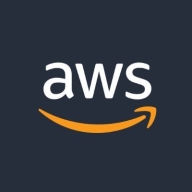

HashiCorp Nomad and Amazon EKS compete in the orchestration space. While HashiCorp Nomad impresses with its pricing and support, Amazon EKS stands out for its features and scalability.
Features: HashiCorp Nomad offers orchestration versatility across any workload and infrastructure. It prioritizes simplicity and flexibility, making it attractive for diverse environments. On the other hand, Amazon EKS enhances scalability and security through its robust integration with AWS services, positioning itself as a feature-rich solution for enterprises deeply engaged with AWS.
Ease of Deployment and Customer Service: Nomad's straightforward deployment model is coupled with responsive support, simplifying setup. Conversely, Amazon EKS features extensive documentation and automated management tools, optimizing deployment within AWS. Nomad is more approachable for smaller teams, whereas EKS benefits larger implementations with its strong AWS connectivity.
Pricing and ROI: HashiCorp Nomad is more cost-effective for organizations with budget constraints and varied infrastructure needs, delivering ROI through reduced setup and operational costs. Amazon EKS, requiring a higher investment due to AWS dependency, provides substantial ROI in AWS-centric environments through enhanced automation and scaling.
| Product | Market Share (%) |
|---|---|
| Amazon EKS | 13.0% |
| HashiCorp Nomad | 3.8% |
| Other | 83.2% |


| Company Size | Count |
|---|---|
| Small Business | 32 |
| Midsize Enterprise | 18 |
| Large Enterprise | 39 |
Amazon Elastic Kubernetes Service (Amazon EKS) is a fully managed Kubernetes service. Customers such as Intel, Snap, Intuit, GoDaddy, and Autodesk trust EKS to run their most sensitive and mission critical applications because of its security, reliability, and scalability.
EKS is the best place to run Kubernetes for several reasons. First, you can choose to run your EKS clusters using AWS Fargate, which is serverless compute for containers. Fargate removes the need to provision and manage servers, lets you specify and pay for resources per application, and improves security through application isolation by design. Second, EKS is deeply integrated with services such as Amazon CloudWatch, Auto Scaling Groups, AWS Identity and Access Management (IAM), and Amazon Virtual Private Cloud (VPC), providing you a seamless experience to monitor, scale, and load-balance your applications. Third, EKS integrates with AWS App Mesh and provides a Kubernetes native experience to consume service mesh features and bring rich observability, traffic controls and security features to applications. Additionally, EKS provides a scalable and highly-available control plane that runs across multiple availability zones to eliminate a single point of failure.
EKS runs upstream Kubernetes and is certified Kubernetes conformant so you can leverage all benefits of open source tooling from the community. You can also easily migrate any standard Kubernetes application to EKS without needing to refactor your code.
HashiCorp was founded by Mitchell Hashimoto and Armon Dadgar in 2012 with the goal of revolutionizing datacenter management: application development, delivery, and maintenance.
The datacenter of today is very different than the datacenter of yesterday, and we think the datacenter of tomorrow is just around the corner. We're writing software to take you all the way from yesterday to today, and then safely to tomorrow and beyond.
Physical, virtual, containers. Private cloud, public cloud, hybrid cloud. IaaS, PaaS, SaaS. Windows, Linux, Mac. These are just some of the choices faced when architecting a datacenter of today. And the choice is not one or the other; instead, it is often a combination of many of these.
HashiCorp builds tools to ease these decisions by presenting solutions that span the gaps. Our tools manage both physical machines and virtual machines, Windows, and Linux, SaaS and IaaS, etc. And we're committed to supporting next-generation technologies, as well.
HashiCorp was founded and continues to be run by the primary authors of all our core technologies powering thousands of companies worldwide. We speak at conferences and write books related to application and infrastructure management.
All our foundational technologies are open source and developed openly, and have been since 2010.
The Tao of HashiCorp is the foundation that guides our vision, roadmap, and product design. As you evaluate using or contributing to HashiCorp's products, it may be valuable to understand the motivations and intentions for our work.
We monitor all Container Management reviews to prevent fraudulent reviews and keep review quality high. We do not post reviews by company employees or direct competitors. We validate each review for authenticity via cross-reference with LinkedIn, and personal follow-up with the reviewer when necessary.